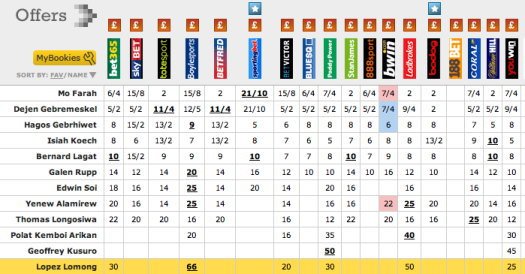- Fractional Odds To Percentage Decrease
- How Do Fractional Odds Work
- Fractional Odds To Percentage Increase
- Fractional Odds Calculator
Fractional odds, also known as UK Odds are most often used in the United Kingdom and Ireland. Originally used in horse racing, fractional odds are one of the oldest forms of odds for sports gamblers. If you were to walk down London’s high street of bookmakers, you would see fractional odds adorning the walls of some the largest bookies in the world.
- Fraction - 1 divided by (the fractional odds plus 1), multiplied by 100 to give a percentage. Fractional odds of 3/1 = (1 / ((3/1) + 1)). 100 = 25%.
- Fractional odds conversion to percentage. Fractional odds are generally the most traditional form of expressing betting odds. They are a simple reflection of the return you will receive for a particular amount bet. So for example, the odds of 5/2 (expressed as 5 to 2) means that for every 2 units that you bet, you will receive 5 back.
Fractional odds are extremely simple to calculate because well, they are given in fraction form. The denominator or 2nd number to the right is the amount bet and the numerator or 1st number on the left is the amount that your wager will yield. Let’s say you wager on Liverpool at 10 to 15 fractional odds.
Fractional odds are extremely simple to calculate because well, they are given in fraction form. The denominator or 2nd number to the right is the amount bet and the numerator or 1st number on the left is the amount that your wager will yield. Let’s say you wager on Liverpool at 10 to 15 fractional odds. For every $150 wagered, your potential net profit would be $100. If you win, your original stake will also be returned to you, leaving you with $250 ($150 original wager + $100 profit) and a net of result of plus $100.
Liverpool 10/15: $150 to win $100 = $250

Let’s look at wagering on an underdog or high odds bet, where the odds are more in your favor. Say you join a new betting site and are placing a wager Newcastle United, the underdog at five-to-one fractional odds, if you were to bet $100 your potential return would be $600, a $500 profit and your original bet of $100 would be returned to you.

Newcastle United: 5/1: $100 to win $500 = $600
If you are wagering on an event where there is a definitive favorite and underdog, the odds of the favorite is often referred to as the “odds on” and the odds of the underdog as the “odds against.” If a bet is even money, the odds are not one-to-one due to the bookmaker’s juice or commission. In most cases, the odds will be 10 to 11, where the bettor risks $110 to win $100.
Fractional odds can also be attached to a point spread:
New York Giants -7 10/11
Philadelphia Eagles +7 10/11

The juice or commission on each bet here is fractional odds of 10 to 11, so you would need to wager 110 to win 100.

Converting Fractional Odds to Decimal Odds:
Fractional Odds To Percentage Decrease
An easy way to convert fractional odds to decimal odds is to convert the fraction into decimal form and then add a 1. For example, 5/1 or five-to-one fractional odds would be 6.00 in decimal odds.
5 / 1 = 5+1 = 6.00
Here is a conversion when you are wagering on a large favorite:
1 / 5 = 0.2+1 = 1.2
Conclusion
Understanding fractional odds is especially important to UK bettors, but even those not normally using these odds can benefit from understanding them. Used by the world’s largest bookmakers, there is no doubt fractional odds are one of the preferred odds for sports bettors across the world.
Ready For More?
Implied probability is basically the conversion of odds into a percentage. That percentage then shows the likelihood of an outcome happening based on the size of the odds. High odds suggest a low probability of something happening, while low odds suggest a high probability of something happening.
For example, imagine a tennis player is +200 to win an upcoming match. This would be 3.00 in decimal odds, and 2/1 in fractional odds. The implied probability for these odds is 33.33%. In this example, the odds suggest that the player has a 33.33% chance of winning the match.
How Do Fractional Odds Work
In sports, the probability of something happening is usually subjective. There are several factors to take into account and there’s always a chance of the unexpected. No one can state definitively the exact probability of a player or team winning a game they’re taking part in. There’s an element of personal opinion involved.
Fractional Odds To Percentage Increase
Calculating the implied probability is useful though. It helps us decide whether or not we think a bet offers any positive value. We should always look for positive value when betting, and it exists when our estimated probability of an outcome happening is greater than the implied probability that the odds on that outcome suggest.
Confused? Don’t worry! It’s not as complicated as it may seem. To make this easier to understand, let’s continue with the example of the tennis player at +200 to win his match. As we’ve said, the implied probability here is 33.33%. So if we think that the player has a GREATER than 33.33% of winning, then it makes perfect sense to bet on him. If we think his chances are less than 33.33%, it’s wise not to bet on him.
Fractional Odds Calculator
If you’d like a more complete explanation on this subject, there’s an article in our sports betting guide that explains value and implied probability in further detail.